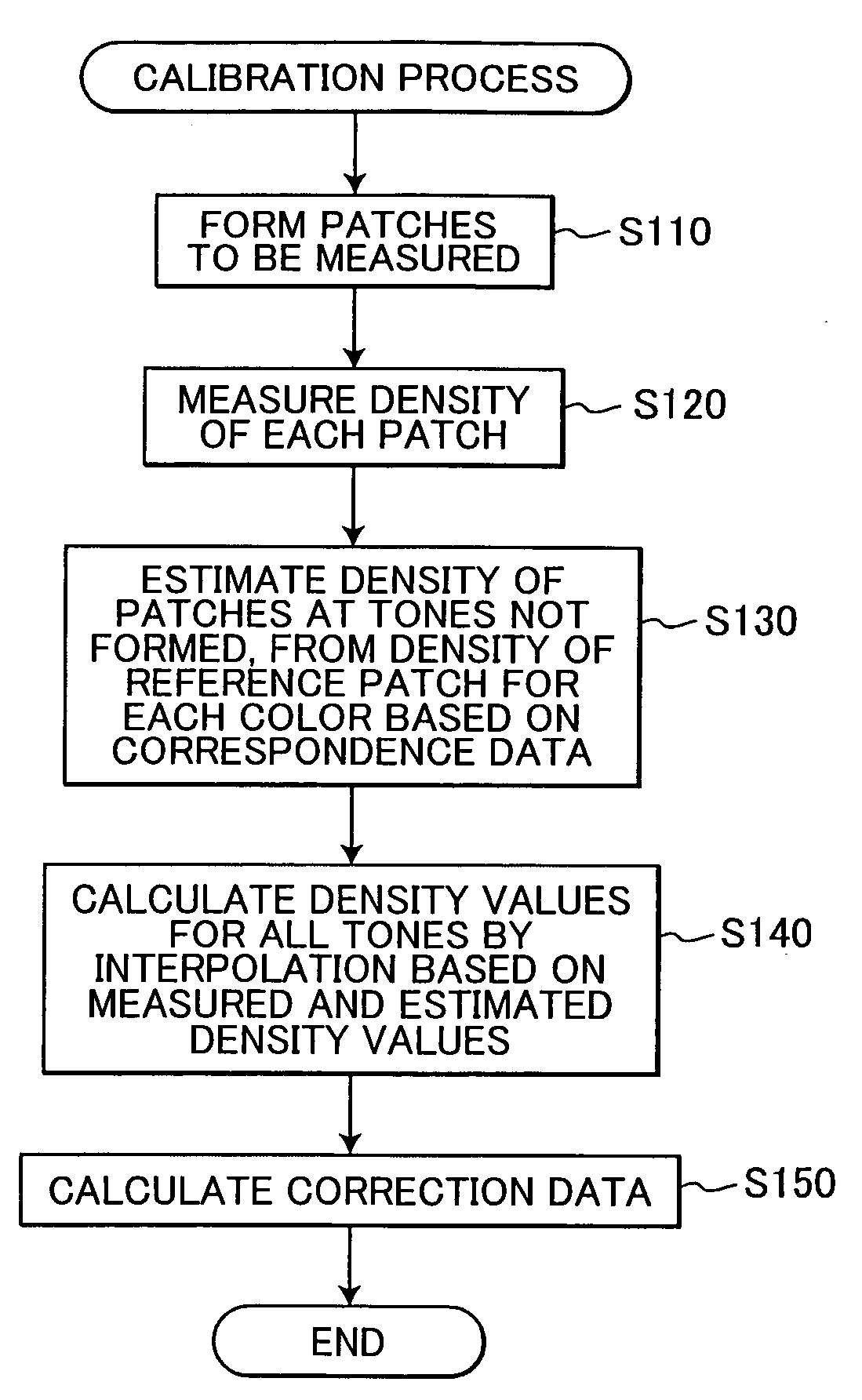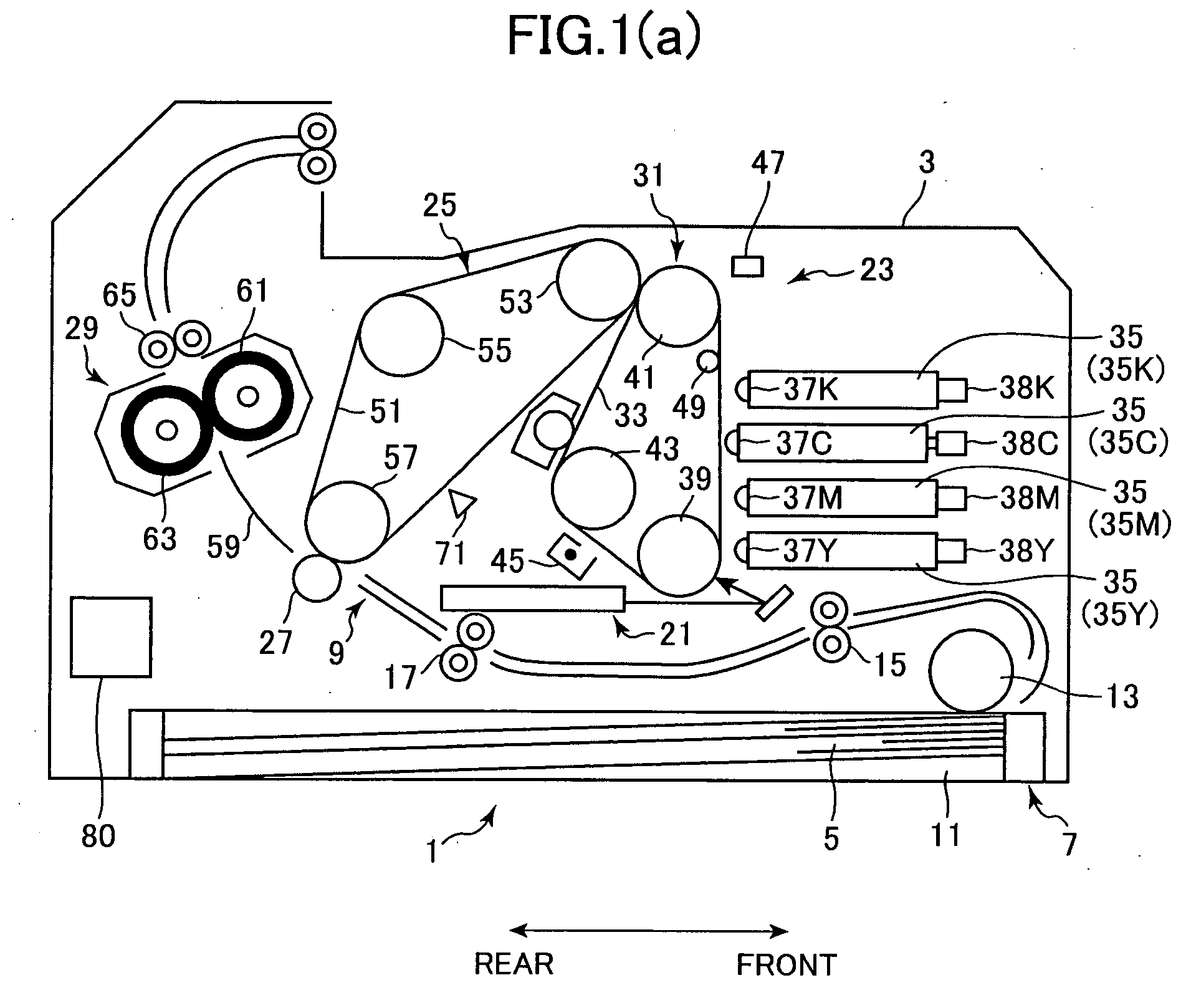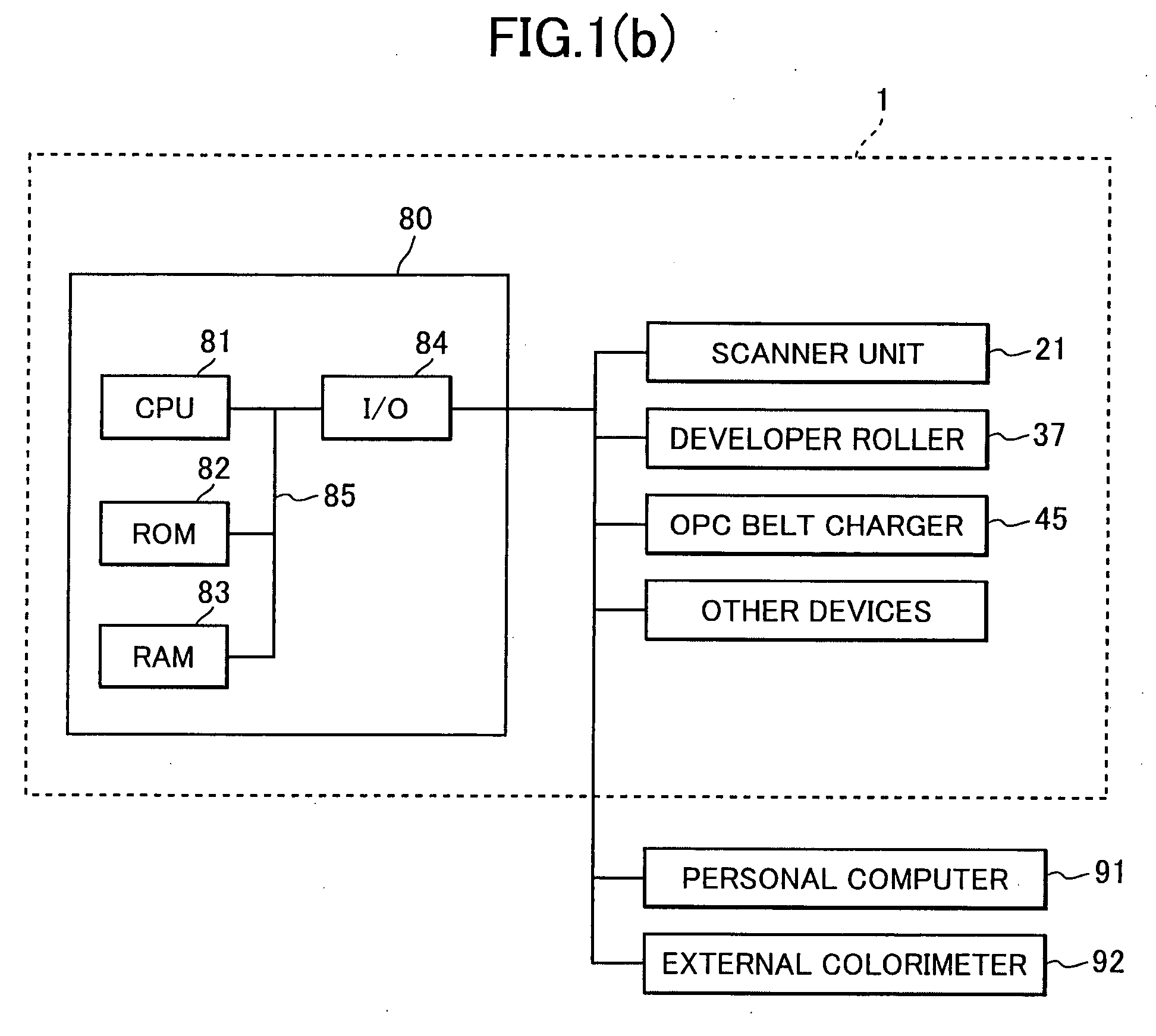Image forming device
- Summary
- Abstract
- Description
- Claims
- Application Information
AI Technical Summary
Benefits of technology
Problems solved by technology
Method used
Image
Examples
Embodiment Construction
[0030] An image forming device according to preferred embodiments of the present invention will be described while referring to the accompanying drawings wherein like parts and components are designated by the same reference numerals to avoid duplicating description.
[0031] An image forming device according to the present invention is described below using a four-cycle color laser printer as an example. As shown in FIG. 1(a), the color laser printer 1 has a main case 3 inside of which are a paper supply unit 7 for supplying paper 5, and an image forming unit 9 for forming a specific image on the supplied paper 5.
[0032] The paper supply unit 7 includes a paper tray 11 for storing a stack of paper 5, a supply roller 13 that contacts the top sheet of paper 5 in the paper tray 11 and rotates to supply one sheet at a time to the image forming unit 9, and transportation rollers 15 and registration rollers 17 for conveying the paper 5 to an image formation position.
[0033] The image forma...
PUM
 Login to View More
Login to View More Abstract
Description
Claims
Application Information
 Login to View More
Login to View More - R&D
- Intellectual Property
- Life Sciences
- Materials
- Tech Scout
- Unparalleled Data Quality
- Higher Quality Content
- 60% Fewer Hallucinations
Browse by: Latest US Patents, China's latest patents, Technical Efficacy Thesaurus, Application Domain, Technology Topic, Popular Technical Reports.
© 2025 PatSnap. All rights reserved.Legal|Privacy policy|Modern Slavery Act Transparency Statement|Sitemap|About US| Contact US: help@patsnap.com



